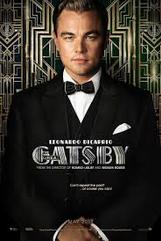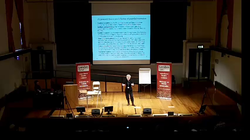
Hi everyone. This is an extract from my advanced screenwriting newsletter. You can read the whole article in the November issue , which you can access by going to the subscription form on this page and clicking 'Previous Campaigns'. If you'd like what you see you can then subscribe to the newsletter by completing the sign-up form. You'll then join our group of people who are interested in how to plan, write and edit film and TV scripts that don't fit the conventional one-hero-on-a-single three act journey. You'll also get special subscribers' access to discounts on my webinars, consultancies, videos etc. etc .
What is Double Narrative Flashback?
First of all, let's just confirm what double narrative flashback actually is. It’s the kind of flashback structure you see in films like The Great Gatsby, Blue Jasmine, The Usual Suspects, Citizen Kane or Slumdog Millionaire and many more. I gave it that name to describe its structure. That way, the name remains a constant reminder of what we have to do to create the structure.The name says exactly what the structure is (hence what you have to do): two narrative lines plus flashback.
You have two storylines, one in the past (a big one) and one in the present (usually much smaller, sometimes very small indeed) and the action of the film jumps between the two, with the two storylines joining again either three quarters of the way through the film or at its end.
It’s the most difficult kind of flashback, requiring a different kind of mindset and operating to all kinds of rules that just don’t apply in conventional linear narrative. Hence, it’s no surprise that it often causes trouble, even to the most experienced of writers.
The story in the present is what causes most problems
Over the years I’ve noticed that it’s the story in the present that causes writers the most problems.
The three main problems are:
1. The story material isn’t suited to double narrative flashback
2. There is insufficient or no mystery in the story in the present
3. The film is opening on the wrong scene in the present for the flashbacks to work
I think the reason writers have problems with the story in the present is that they aren’t really interested in it. I can really sympathize. When you’re writing a double narrative flashback story, what you’re in love with - your reason for writing - is the story in the past. So you don’t really care about the story in the present. It feels like a necessary evil. You want to rush through it in order to get back to the past.
However, if you want your story in the past to work properly, the evidence suggests that you must pay a great deal of attention to the story in the present, because if it’s not properly constructed it will drag the script down, even kill it. Unless your story idea has actually presented itself to you with a strong story in the present, you will need to make a conscious effort to create and fall in love with a story in the present (even if it’s very short indeed). You won’t regret it. You can do wonderful things with the story in the present and end up with two magnificent stories – look at Blue Jasmine
Problem 1
The story in the present is redundant (in other words, do you need flashback at all?)
I spend a lot of time suggesting to people with problem double narrative flashback films that their film doesn’t need double narrative flashback at all. Remember, if you use double narrative flashback you have to create a compelling unfolding MYSTERY in the present that you keep returning to, a story that really involves the audience, or they’ll get bored. You have to keep servicing that story, taking its protagonist forward, creating a plotline. It’s hard enough to create one good story, let alone two that you have to interweave. So think seriously whether you need it. If you don’t need it, the story in the present can become a millstone around your neck,
Possible Fix 1
Is Preview Flashback the answer?
Perhaps you do need a flashback, but it’s another sort of flashback, preview flashback, which I discussed in last month’s newsletter. Preview flashback is when the film opens on an event a long way into the story (usually the second act turning point) which provides a hook, then jumps back to the start of the story and continues uninterrupted through to its end, repeating the scene we saw at the opening. It’s really a simple loop, with a scene or segment from the body of film acting as a kind of tantalizing preview. It turns your film into a detective story of sorts because we want to know what that opening sequence is all about.
There are all kinds of good narrative reasons for using preview flashback. It can work wonders when properly used. So, if you feel you need flashback, maybe you are feeling a need for preview flashback, not double narrative flashback at all. The big advantage is that you don’t have to keep returning to the present to service a story that you don’t actually need.
Possible Fix 2
Is your film inherently a straightforward, linear chronological story?
I can explain this better by giving you an example of a film that I think has a redundant story in the present.The film is Paying it Forward. It opens with the story in the present. A young man is upset because his car has been stolen or broken down. A complete stranger gives him the use of his own car. The young man asks the stranger why he is being so generous. The stranger explains that he is repaying a good turn that was done to him by a complete stranger, and this is ‘paying it forward’. Our young man sets out to find the person who
(Continued in the November newsletter. You can read the rest of this article and preview the newsletter to see whether you'd like to sign up by going to the newsletter subscription form on this page. On it you'll see a 'Previous Campaigns' link. Click on that, then, if you think the newsletter is something you'd enjoy, you can subscribe. Just note that as an anti-spam protection for you, you'll be asked to confirm your subscription.)
Best wishes
Linda


 RSS Feed
RSS Feed


